The Broke Backpacker is supported by you. Clicking through our links may earn us a small affiliate commission, and that's what allows us to keep producing free content 🙂 Learn more.
Journalling has changed my life and transformed my travel experience… And today, dear friend, I’m here to share with you my top tips for HOW TO JOURNAL LIKE A BOSS, because believe it or not there are so many different ways to unleash the healing, introspective, power that lies within putting pen to paper on a regular basis.
My early years of gallivanting around India on a shoestring budget were some of the most incredible years of my life. Looking back through my scrappy journals from fifteen years ago brings me great joy as I can clearly remember the sights, sounds, tastes, smells and vibrancy of being on the road in a far flung land at such a young age.
Today’s post is another collaborative post between myself, Will Hatton, the OG Broke Backpacker, and Audy Scala, a living embodiment of the next generation of brave and introspective broke backpackers keen to live a life of adventure, connection and freedom.
Audy hit the road at the age of 17 on an extreme budget and hitchhiked her way across Central America, picking up odd jobs along the way to stretch out her journey.
Today, we’re going to combine our top journalling tips and strategies to show you the many different ways that you can use your journal for personal development and to keep a record of your travel experiences.
When I met Audy I was absolutely blown away by her own totally unique style of journalling, it’s unlike anything I’ve seen before, and it’s truly beautiful, but I’ll let her tell you all about that later in the post.
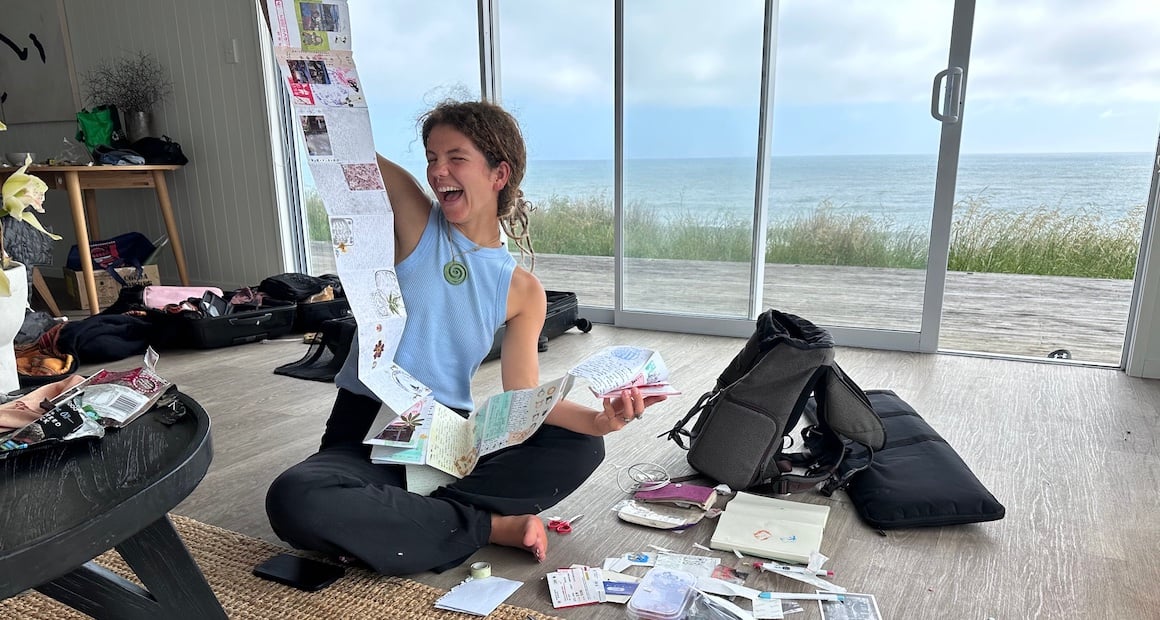
Photo: @willhatton__
The Broke Backpacker is supported by you. Clicking through our links may earn us a small affiliate commission, and that's what allows us to keep producing free content 🙂 Learn more.
What Even IS Journalling?
This is tough to answer.
Some would say that journalling is the art of letting what’s going on in your head flow onto blank pages, old school style with paper and pen. It’s a form of reflection that allows you to relive your most amazing moments and release your worst.

Photo: @willhatton_
Sometimes I find myself journalling based on prompts I write out on flashcards, and others I’ll be neck deep in a somewhat chaotic brain dump. Often, I like to plot out my goals and hopes for the next few years or to reflect on lessons learned from my experiences so far.
Why YOU Should Start Journalling
The fantastic mental health tool that is journalling is just about free, and perhaps the most flexible daily practice I’ve ever encountered. There is no right or wrong way to do it. Journalling is just about fostering a meaningful meeting between your conscious and subconscious self.
The advantages of learning how to journal are almost endless! There are virtually no downsides, and you’ll soon find yourself looking forward to this daily escape which will help you organise your thoughts, release some anxieties, reflect on lessons learned, and record meaningful moments in your life so you can remember them forever.

Photo: @audyscala
As a traveller, I’ve found that there is no better way to sort through my adventure and emotions than by writing my thoughts down the old-fashioned way. It’s also a fantastical way to save fresh memories so that you can turn them into stories later on. Many of my travel tales started by way of a headlamp-lit writing session.
You soon find yourself able to analyse what’s going on both inside and around you – and reading your old entries will give you a level of introspection you can’t find anywhere else… even in some of the best travel books.
How Starting to Journal Changed My Life: The Benefits of Journalling
My journey into the world of journalling has quite literally set me on an incredibly transformative path that I never would have been able to access otherwise.
Though it may seem like a big commitment to dive into at first, don’t be surprised if daily journalling becomes the part of your routine that you simply cannot skip.
I’m at a point where I really hate to miss a day of journalling – even when I’m out somewhere in the mountains or on the trail, sometimes I get really carried away and will write out a hundred pages over one candle-lit night.
Need even more convincing? Here are some ways that journalling has changed both mine and Audy’s lives!

Photo: @audyscala
1. Journalling reduces stress and anxiety
It feels like somewhat of a metamorphosis to dump your thoughts down and get them outside of your head. It allows you to sort through all the noise in there and smash it all out. I always feel lighter after a write.
2. Learning how to journal leads to self-discovery
Be prepared to finally get to know yourself. This practice is quite akin to therapy, except it allows you to figure things out without any outside input. I’ve gotten to know so many parts of myself that I’d buried, forgotten pieces of my past that were negatively affecting my present.
As you reach further and further down each page, you’ll inevitably get closer and closer to finding out who you truly are.
3. Journalling helps you make tough decisions
When I find myself stuck in between two options, I sort out the pros and cons on paper. Visualizing what I’m actually thinking about always makes the paths I am choosing between so much clearer.
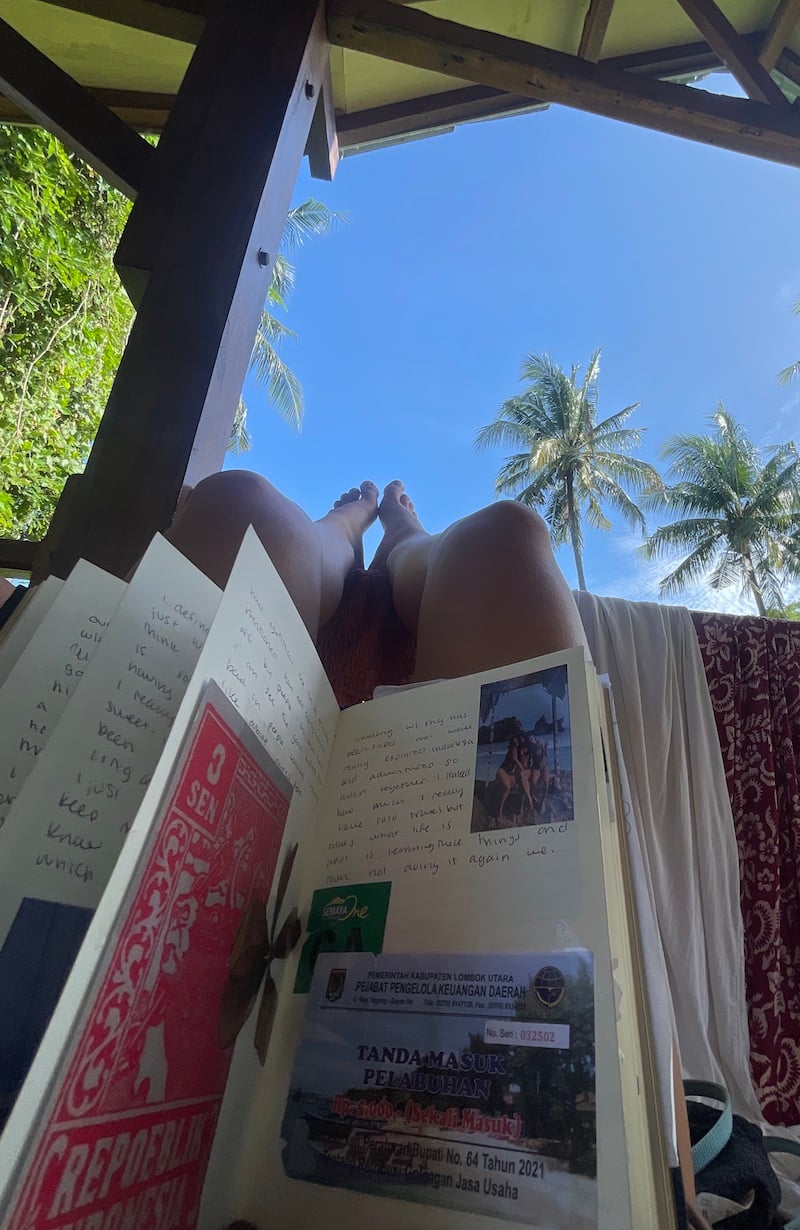
Photo: @audyscala
4. Journalling will help you achieve your goals
There is something about writing down what you want to achieve that makes it so much more tangible. This is why I like to begin many journal entries with my goals for the day – it allows me to hold myself accountable in a way that digital calendars do not. As I visualize what I’m writing down, I’m that much closer to bringing it into my reality.
5. Journalling can improve your physical health
It’s no surprise that this craft has powerful effects on mental health, but studies have shown that your physical health will improve too. From strengthening the immune system to reducing blood pressure, journalling is nothing short of a full-body practice.
6. Your journal can birth some magnificent stories
Writing down my travel stories while on the road ensures I don’t forget those important details as more and more experiences fill my brain daily. I’ve had many a journal entry turn into a blog post – and even if you’re not creating travel content, there is no better way to safeguard your memories.
Four Different Types of Journalling
Discovering exactly how to journal daily is undeniably personal. Here are a few different ways to get started…

1. Prompt-based journalling
This is all about picking a card, any card, and responding to a pre-written prompt. I really enjoy writing out my own prompts! Here are some flashcards I’ve written out over the last few years…
- Who am I grateful to have met?
- What are my core five values?
- What habits could I introduce that would positively change my life?
- What do I need to let go of?
- What are my weaknesses and how can I protect myself from them?
- How can I show up better for myself?
- What advice would I give to myself one year ago?

But there’s so many more…
Pop your email in and I’ll send you my full list of journal prompts.
2. Free writing
A classic brain explosion. Even if you prefer prompts, I find it useful to engage in this style of journalling regularly as it always feels especially cathartic. Put pen to paper, and write three pages. I found this style of journalling absolutely essential when in Peru on a twelve day Ayahuasca retreat – it really helped me process what I was experiencing.
3. Bullet journalling
Quick and direct, bullet points allow you to track your habits, your moods, and anything else that comes to mind. If you’re looking for a very simple way to get started, this may be your best bet.
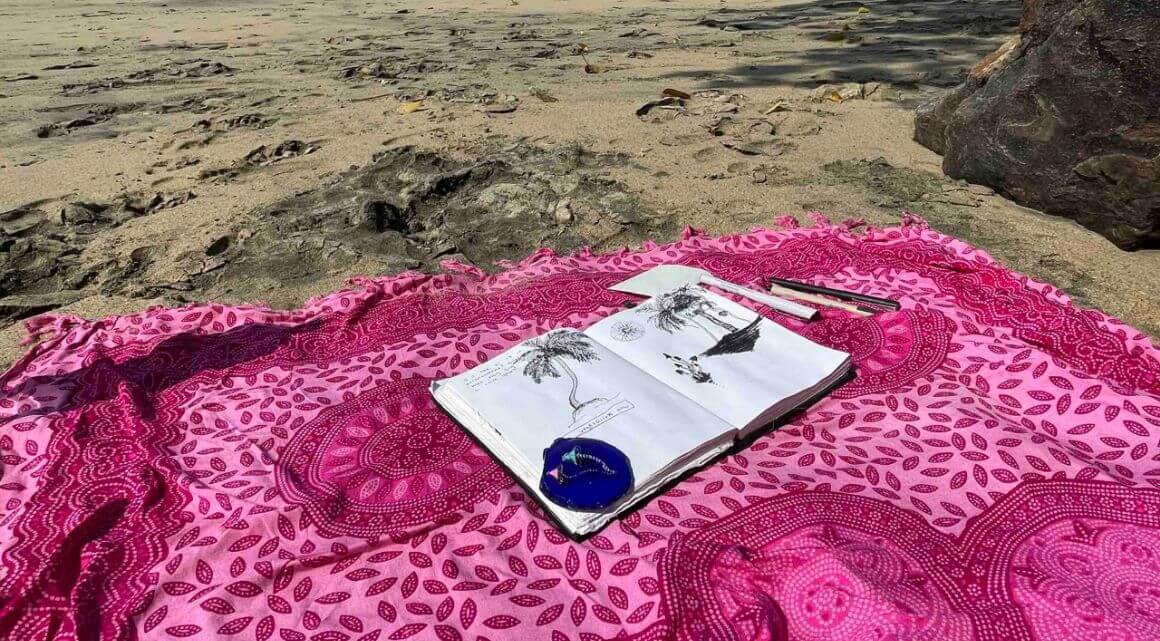
Photo: @audyscala
4. Visual journalling
This is a kind of journalling that is really new to me but which I am so impressed by. Draw, paint, or even create a scrapbook with pictures you print or cut out of a magazine.

Photo: @willhatton_
Audy: Visual journalling is my favourite type of journalling, similar to scrapbooking. Throughout my travels, I collect a variety of things to add to my journal, such as plane tickets, sweet wrappers, letters/notes, pressed flowers or anything that catches my eye! I also enjoy sketching or painting my surroundings when I am in a new city or new place in nature, it’s fun way to capture the moment and reflect. Below are some of my favourite things to collect on my travels and paste into my journal…
How Visual Journalling Changed the Game for Me!
Visual journalling has truly revolutionized my approach to self-expression and introspection. In the past, I often found myself caught in a cycle of pressure, striving to make every journalling session profound and productive. This mindset, however, only served to stifle my creativity and leave me feeling stuck in my journalling practice.
Since then, I’ve embraced a more fluid and intuitive approach. Instead of forcing myself to adhere to rigid expectations, I allow my journal to evolve organically based on my feelings and moods each day. Some days, I might find myself doodling whimsically, while others inspire me to create collages or print out photographs. This flexibility has enabled me to tap into my subconscious and gain valuable insights into my emotions and thought patterns.

Photo: @audyscala
Reflecting on my journals over the years, I’ve noticed a clear correlation between my creative output and my emotional state. During periods of inspiration, peace, and groundedness, my creativity flourishes. Conversely, when I feel overwhelmed, I tend to prioritize writing as a means of unloading my thoughts, neglecting the visual aspects.
By combining creative visual journalling with introspective practices, I’ve deepened my understanding of myself and my behavioural patterns over time. It’s a journey of self-discovery that continues to unfold with each page I fill.
Things to Collect on Your Travels to Add to Your Journal!
Just a few tidbits to paste into your travel journal…
Plane Tickets
I add every plane ticket to my journal, I have a ritual of journalling a reflective entry detailing my time in a destination whilst in the airport. I then add the plane ticket as a marker to that specific entry so I can easily return back to my reflection on that adventure.

Photo: @audyscala
Flowers
Try collecting some flowers/plants from the destinations that you’re visiting, add them to be pressed in between blank pages and forget about them. Come back a week later and you have a beautiful flower to jazz up any journal page and remind you of some beautiful memories in nature.
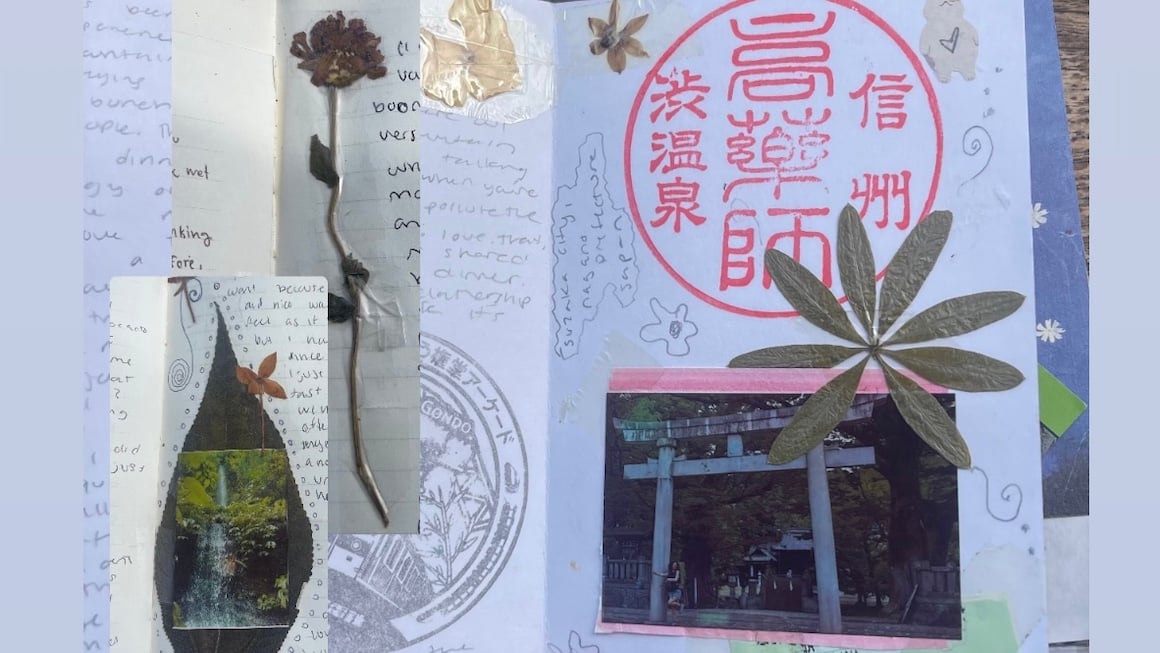
Photo: @audyscala
Photos
Try buying a mini Bluetooth printer, I promise it’s worth it! This super cool gadget is an absolute game-changer and allows you to print out sticker photos that you can instantly add to your journal. It’s such a fun way to spice up your pages, and capture memories to live forever!
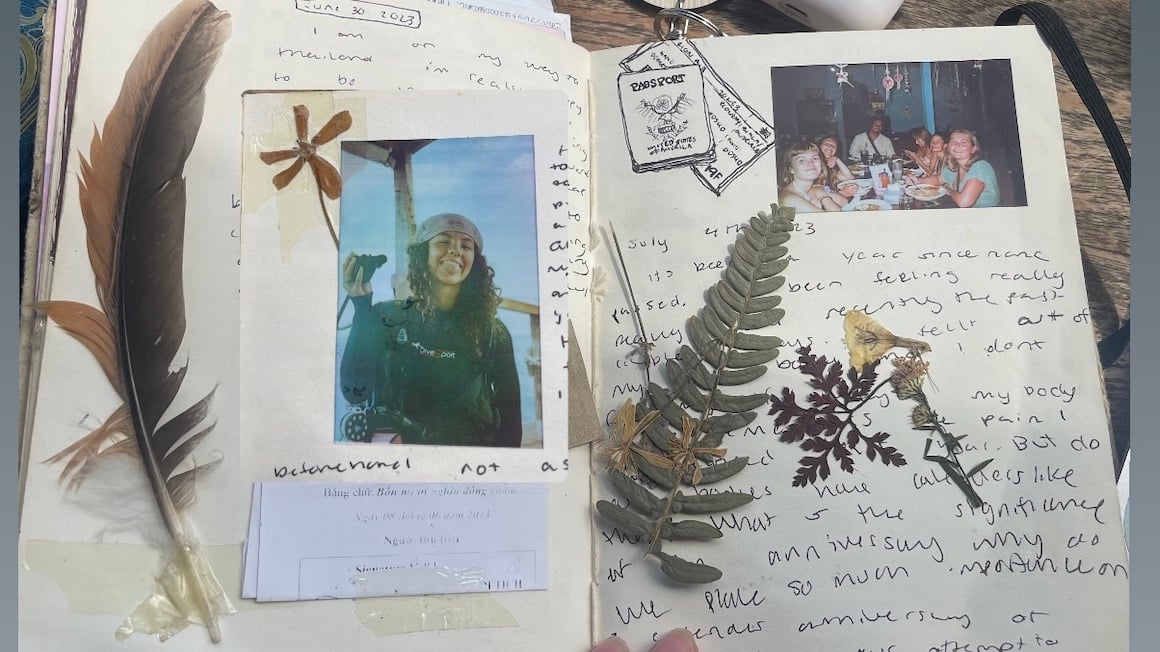
Photo: @audyscala
Trash / Receipts / Business Cards
Keep anything and everything from your travels to add to your journal… postcards, tickets, receipts, stickers, name tags, letters, notes, and business cards… you name it, keep it. You can always toss it later if you don’t use it.
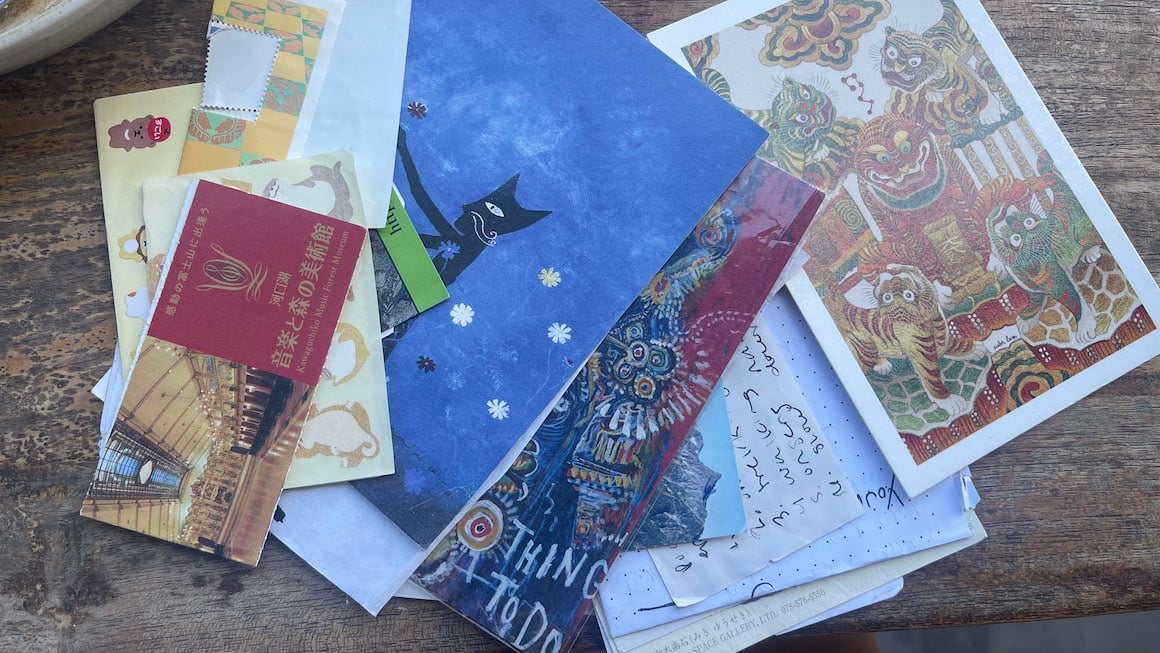
Photo: @audyscala
Money
I keep a small note from every country I visit. I think forward to when I have kids and how cool it will be to show them the money from all the countries I’ve visited around the world.

Photo: @audyscala
Drawings
Drawing can be such a fun way to express yourself when you may be at a loss for words. It is also a great way to capture the place that you’re visiting in your own unique way.
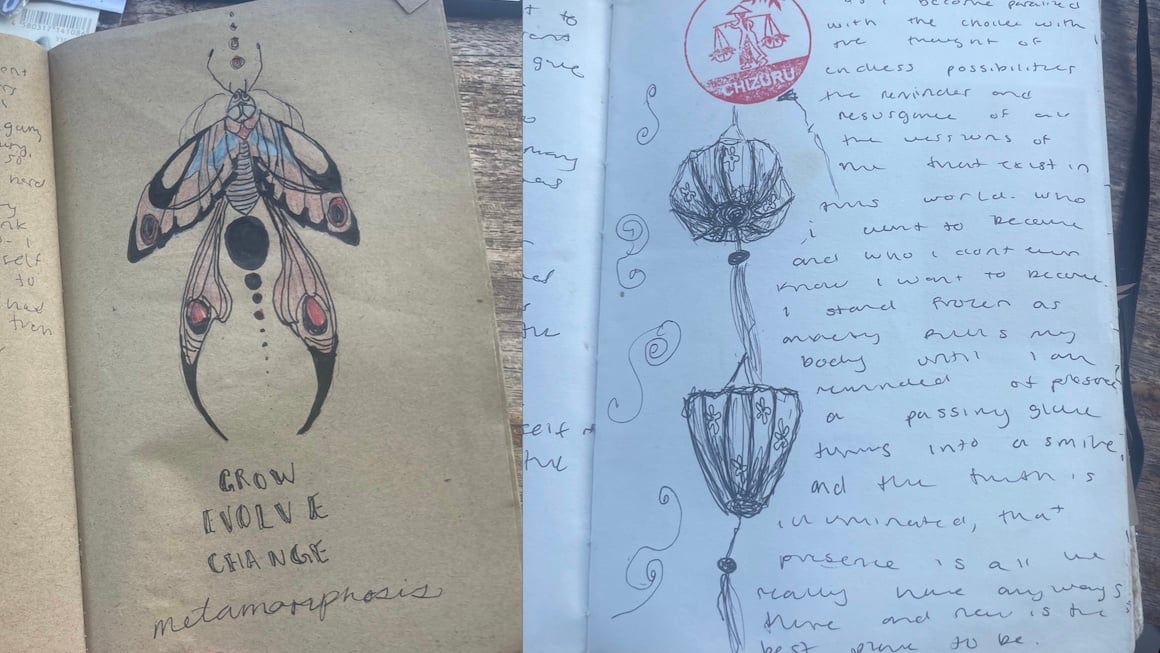
Photo: @audyscala
What is Scripting?
Scripting manifestation is one of our favourite exercises! Scripting is where you write about your desires as if they have already manifested. You write an entry that depicts your ideal future as if it’s happening in the present moment.
Write as if you already have what you want.
By immersing yourself in the experience of your desired outcome and writing about it with clarity, emotion, and gratitude, you align your thoughts and feelings with the reality you wish to create. This technique leverages the principles of the law of attraction, focusing on positive visualization and belief to manifest your goals into reality.
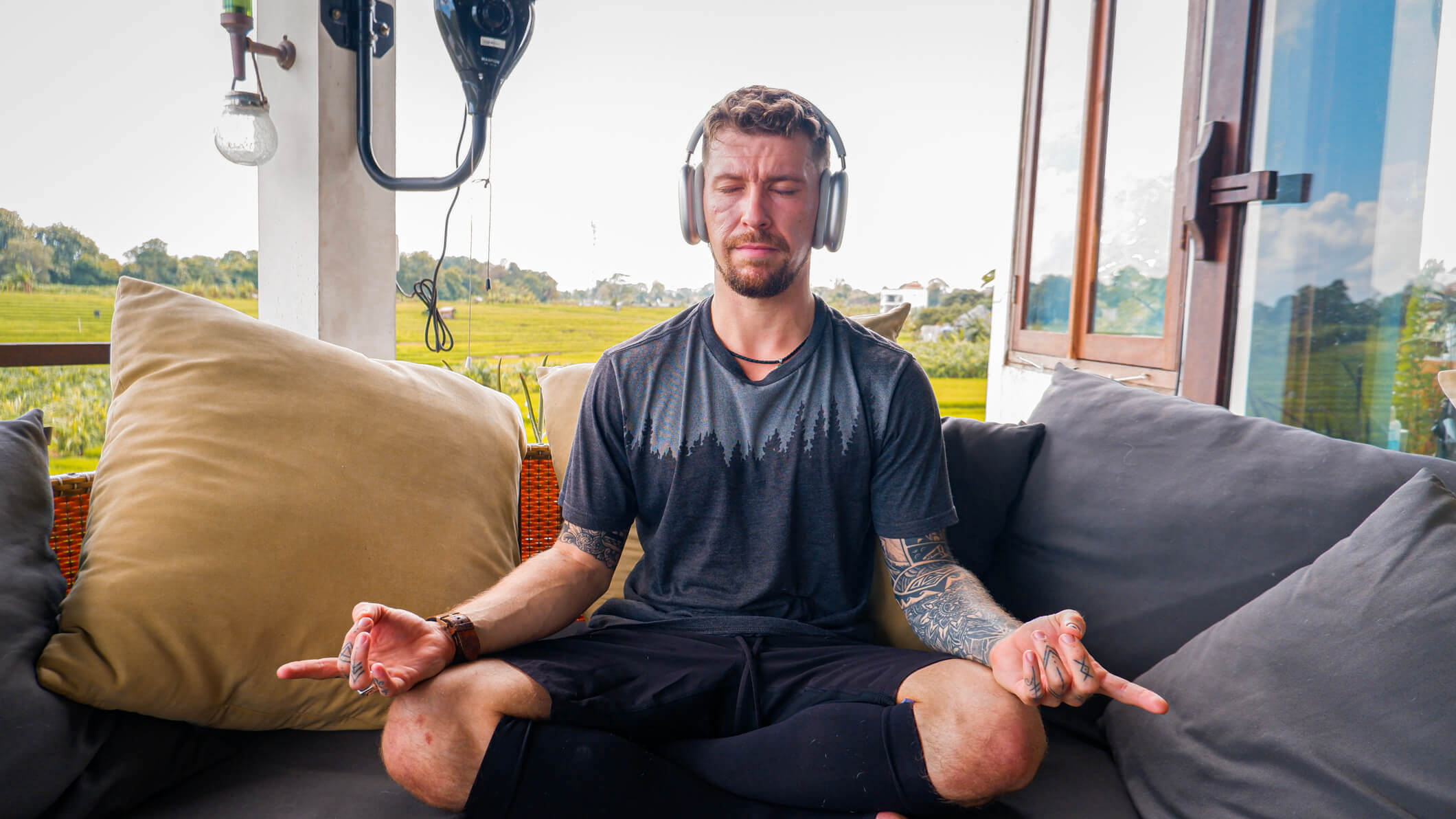
What is the difference between journalling and scripting?
Journalling involves getting lost in writing from your current state, documenting experiences or listing goals for the future.
In contrast, scripting is when you write as if you are in your future state as if your goals have already been achieved. Scripting manifestation entails imagining and describing how it feels after your desires have manifested in your life.
Steps for Scripting
First Step: Try to find a peaceful spot, preferably in nature or somewhere where you feel secure and relaxed. Take a deep inhale and exhale, find some peace and ground yourself.
Second Step: Before starting your scripting, take a second to feel gratitude. There are so many amazing things on this earth and in your life to feel grateful for but gratitude is like a muscle and if you don’t train it, it’s easy to not feel grateful for the good things in your life.
You can be grateful for the life you have, for cute doggos, for the food that fuels you, your friends, your vision, lessons you have learned, the pen you hold, the air you breathe, or for the ground you walk on.
Third step: Now grab your journal and start scripting. Write down the story of your future. What kind of dreams do you want to realize? What do you want your life to be? Write the details and specifics like dates and times. You can use all of your five senses – taste, smell, touch, and all in your story. Use as much detail as possible. Write how it feels.
For example, if your dream is to travel to Nepal next year, you would write:
“I am so happy and grateful that I am finally in Nepal, it’s October 2025. I can feel myself jumping with excitement, everything is so new and exciting. Snow capped mountains tower over the small village I am in, a cold breeze caresses my cheeks, I am here alone but couldn’t be more content. Flapping prayer flags surround me as I look out across the valley below, swaying suspension bridges crossing raging rivers of vibrant turquoise. I feel so happy, so grateful to myself for putting in the work to bring myself here. I feel I am making great progress in my personal development, I have done hard work and have let go of past pains, healing some trauma and opening myself up to more love for myself and others. My body feels healthy, as I have been consistent with my fitness journey and it’s really paid off. I sigh, sip upon the mug of steaming hot chai, and smile to myself, life is beautiful”.
Benefits of Scripting
Scripting manifestation relaxes both the body and mind, relieving the need for constant decision-making or figuring out what actions to take next, which can be exhausting. Instead, it offers clear guidance towards achieving your aspirations.
Scripting can fill you with joy and inspiration… It can even reduce anxiety and depression because you have a clear goal of where you’re heading as it uses the present tense. That means your mind is focusing on what you have now instead of worrying about the uncertainty of the future, and positive feelings stop you from dwelling on the past.
Psssst, I am now hosting retreats in Bali where I teach people about the tools and systems that helped me crack the code – both as a human and as an entrepreneur. Interested?
Learn MoreHow to Start Journalling (And Stick With It)
Getting into the habit of writing in a journal is by and far the hardest part. I’ve seen too many people that I know could benefit from journalling find themselves simply unable to fill out that first page.
After many years and novels of pages penned, there is no secret. There is just the determination to forge a new path of self-discovery – that might just change your life in the process.
Like anything you desire to be successful in, the most important thing is to figure out a time of the day that you will be able to stick to. When starting any new habit, it’s best to hit it as early as possible in the morning when you have the most willpower and the least distractions. Perhaps consider putting a ‘treat’ on the other side of your journalling practice – for example, not looking at your phone until you’ve journaled in the morning is a great way to start the day and strengthen the habit.

Photo: @willhatton__
If you can’t commit to journalling daily, start with every other day. Whatever works for you. The key is to keep from getting so overwhelmed that you quit before you’ve started to see the benefits. Maybe even consider doing something like a writer’s retreat to get you started.
Maybe it sounds most appealing to start by simply dumping the contents of your brain down, in a free writing style. This is where you let it all out without holding back.
If you find yourself in need of a bit of structure, or perhaps a combination of writing and drawing, never fear, amigo. There are millions of journal prompts out there, and it is SO MUCH FUN to put together journal entries from stuff you’ve collected along the way.
How to Journal for Mental Health
All types of journal entries are good for the psyche, but you can still curate your practice for the most brain benefits… It’s good to work with gratitude, positive affirmations and projecting forward to what you want your life to look like in the future.
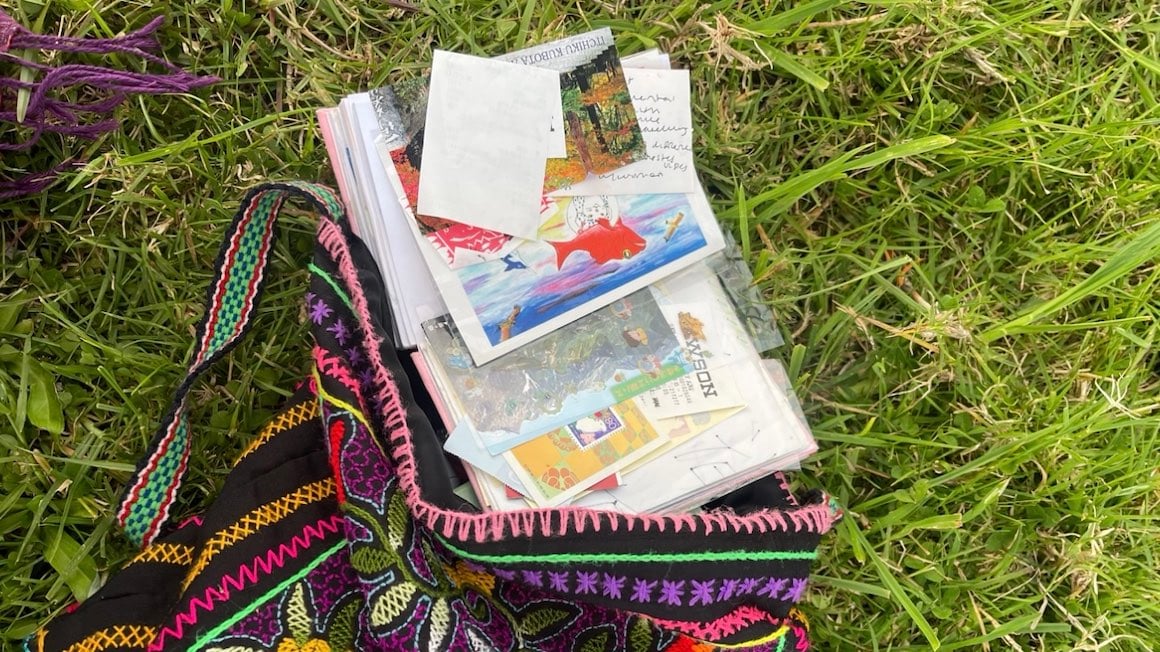
Photo: @audyscala
Find a time and place that feels most comfortable for you, and allow your journalling practice to serve as a tool for increasing self-awareness. Through your entries, pay attention to your symptoms, triggers, and effective coping mechanisms.
Think of introspection as a muscle that grows stronger with regular exercise. By consistently engaging in self-reflection, you’ll gain deeper insights into yourself. It might be challenging to articulate, but trust in the process—regularly asking yourself questions leads to significant growth.
Here’s a tip: Aim for consistency in your journalling practice to observe and understand your patterns and habits better. However, release any pressure or expectations. Whether you jot down a couple of sentences, fill three pages, or create a quick doodle, it’s all valuable. Your journal doesn’t need to be tidy or organized; it’s a space for releasing and exploration.
Journalling Rituals
If the idea of journalling daily feels overwhelming, consider adopting a journalling ritual that resonates with you, helping with consistency and reaping the rewards of reflection.
I suggest using the full moon and new moon as markers for your journalling practice. On each new moon, dedicate an entry to sharing your intentions, goals, creative ideas, and more. Then, during the full moon, focus on what you wish to release, let go of, and disentangle from.

Photo: @Lauramcblonde
Witchy stuff aside; having these lunar markers provides a framework for your journalling journey. Reflecting on your bi-monthly entries can bring immense gratitude for how far you’ve come and allow you to tangibly witness the manifestation of your dreams into reality.
Journalling during the full and new moon can be a powerful way to connect with your inner self and set intentions for the upcoming lunar cycle. Here are some prompts for both the full and new moons:
Full Moon Journal Prompts:
- Reflect on the past lunar cycle and summarize what went well. Where could you have done better? What lessons did you learn?
- How have you grown emotionally, mentally, or spiritually since the last full moon?
- What emotions are coming to the surface during this full moon? Take some time to explore and acknowledge them.
- Is there anything in your life that you need to release or let go of? Write about what no longer serves your highest good.
- Consider the intentions you set during the previous new moon. Are you on the right path to achieving what you want? If not, what adjustments can you make?
- What are you grateful for at this moment? List at least five things.
- Visualize yourself under the full moon’s light, surrounded by its energy. Feel yourself be charged and invigorated by the moon. What intentions do you want to set for the next lunar cycle?
- Write a letter to yourself, expressing love, encouragement, and forgiveness. Reflect on your strengths and achievements. Acknowledge where you really fucking rock, list things to be proud of.
New Moon Journal Prompts:
- Set the stage for new beginnings. What do you want to manifest or create during this lunar cycle? What are your main goals for this coming month?
- What is going well in your life right now? Where can you make improvements?
- What areas of your life are in need of growth or transformation? Write about the changes you want to initiate.
- Consider any obstacles or limiting beliefs that may be holding you back. How can you overcome them?
- Take inventory of your dreams and desires. What do you truly want to experience, achieve, or attract into your life?
- Connect with your intuition. What inner wisdom or guidance is emerging?
- Create a vision board or collage depicting your intentions and aspirations for the new lunar cycle. Include images, words, and symbols that resonate with you.
- Write a letter to the universe, expressing your intentions and desires for the upcoming month. Trust that the universe will support you in manifesting your dreams.
Feel free to adapt these prompts to suit your own journalling style and preferences. Remember to approach your journalling practice with openness, curiosity, and self-compassion. In general, it is useful to always include these three elements; Analysis of the past month (with a focus on celebrating wins, be kind to yourself), goals and hopes for the coming month, and gratitude.
Why You Should Avoid Digital Journalling
Amigos, this is an important one. I know this may sound silly as you’re reading this on a digital travel blog, but please hear me out.
Part of what makes journalling so transcendental is that it brings you back to your roots: we may have gotten caught up in the world of laptops and iPhones, but writing by hand is profound.

Photo: @audyscala
The physical act of putting pen to paper will bring you on an escape that tapping away on your laptop keys simply will not. And for my fellow digital nomads, this is even more important for you.
Physically writing takes longer, and this is a good thing…
We spend so much of our days on our laptops – it’s undeniable that our brains are desperate for a blue-light break. Writing in a traditional journal is that much-needed digital detox, which is why most find it best to either start or end their day with the practice.
Why You Might Need More Than One Journal…
Having more than one journal can offer many benefits, catering to different aspects of your life. I have many different journals, especially when I am in one place for a while, as backpacking with multiple journals can be… well, heavy.
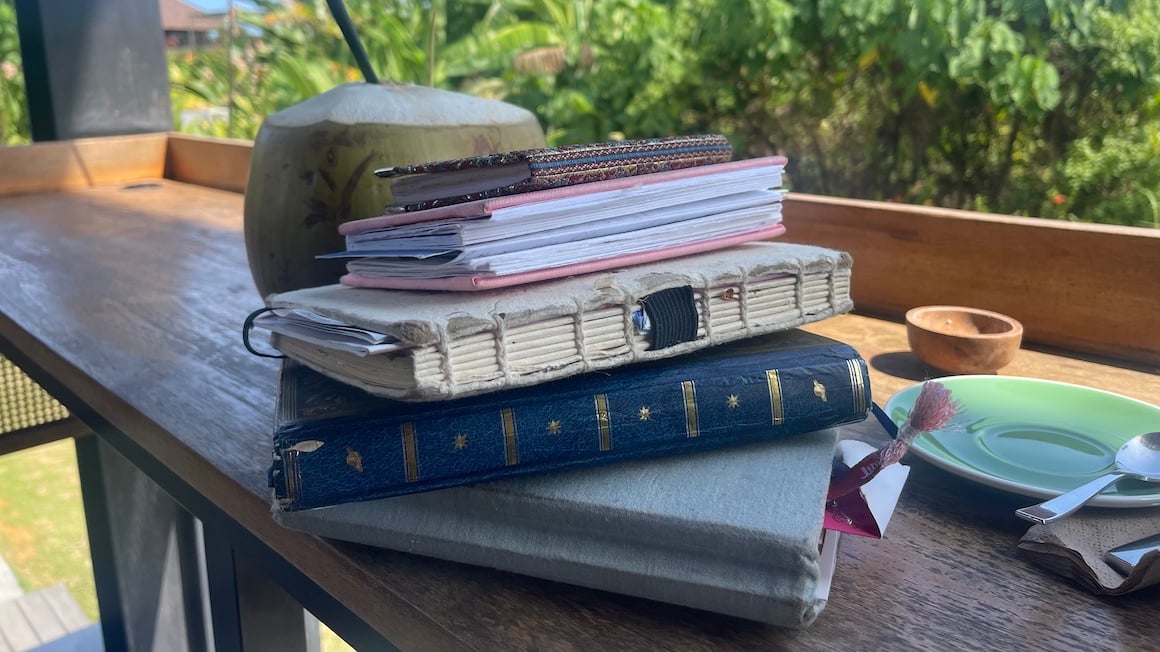
Photo: @audyscala
Here are some different types of journals you could have…

Photo: @audyscala
- Bullet Journal: This is my primary journal, I really love the dot format as it feels neat and organised and allows me to make lists.
- Prompted Gratitude Journal: A prompted gratitude journal provides structured prompts or exercises to cultivate a mindset of gratitude. It encourages you to focus on the positive aspects of your life and fosters a sense of appreciation for the blessings, big and small. Just five minutes of this, two times a week, is a game-changer. My bullet journal and my Kurzgesagt gratitude journal are the two journals I always travel with.
- Visual Journal/Sketchbook: A dedicated visual journal provides a canvas for artistic expression through doodles, sketches, collages, and more. It allows you to tap into your creativity and explore visual storytelling without the constraints of traditional writing. This type would typically have no lines and empty pages.
- Pocket-Sized Journal: A compact, travel-sized journal is convenient for jotting down thoughts, memories, and observations on the go. It’s perfect for capturing fleeting moments during travels or daily adventures, ensuring you don’t miss out on documenting meaningful experiences. You can also use this to press flowers you find on the go or jot down quick ideas.
- Dream Journal: Keeping a journal dedicated to recording dreams allows you to explore the realm of your subconscious mind. You can learn a lot about your current mental state and subconscious through your dreams. It provides insight into your innermost thoughts, fears, and desires, and can be a source of inspiration and creativity. Try writing an entry every morning when you wake up about the dreams you had the night before.
- Accordion Style journal: Accordion-style journals are one of our personal favourites, offering a captivating 3D effect, transforming the simple act of revisiting memories into a magical, mesmerizing experience. With their unfolding pages resembling miniature art installations, these journals add a touch of magic to your cherished memories.
By incorporating multiple journals into your routine, you can tailor your writing practice to suit different aspects of your life and keep it a bit more segmented and organized. If the above list is a little overwhelming though, choose just two to start and try to make one of those a journal type that has scripted prompts, it’s an easier way to get started.
Final Thoughts on How to Journal
The amazing thing about learning how to journal is that there really is no right or wrong way to do it but it can totally change your life and provide more mental calm, more clarity on where you are going, more gratitude for where you have come from and more excitement for what you could achieve.
Journalling is the ultimate mental health tool and for both Will and Audy, it has changed our lives.
And that’s it friends, all of our top tips for happy journalling! We really hope that this is useful to somebody, and if that person is you – let us know in the comments!
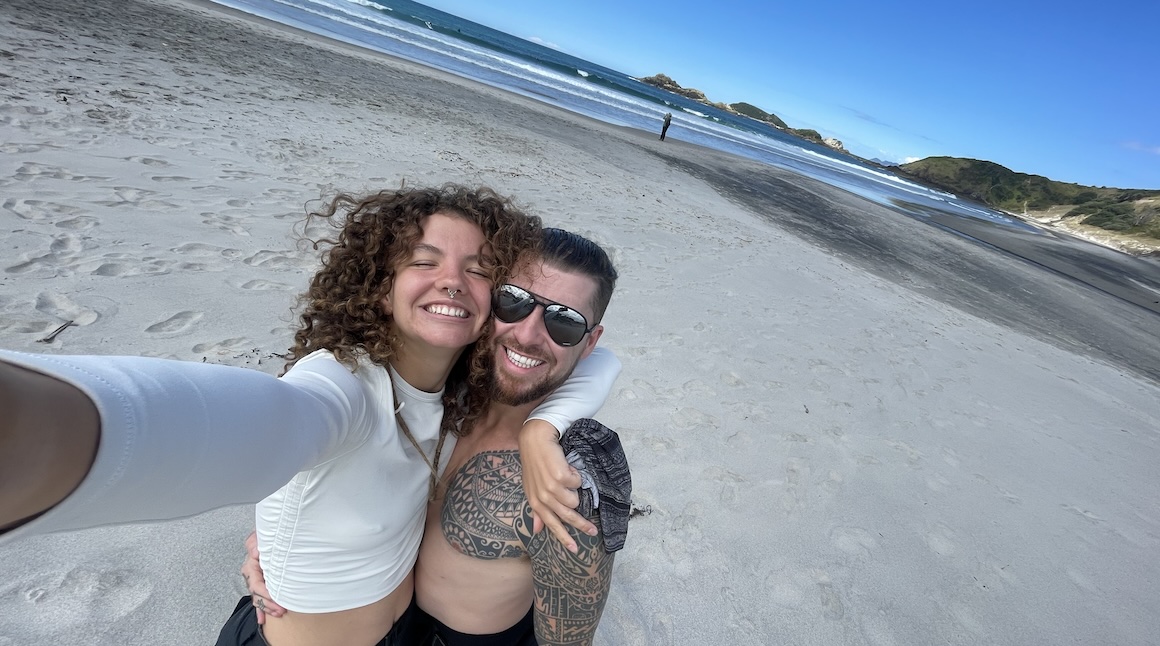
Photo: @audyscala

Audy: Junior Editor & Hitchhiking Hero
This post was written as a collaboration with Audy Scala, a living embodiment of the next generation of brave and introspective broke backpackers keen to live a life of adventure, connection and freedom. Audy has travelled far and wide across the globe from a young age, hitchhiking, hustling, and crafting as she goes and is my freaking hero. I have quite a big adventure crush on her.
Buy Us a Coffee!
A couple of you lovely readers suggested we set up a tip jar for direct support as an alternative to booking through our links, since we’ve decided to keep the site ad-free. So here it is!
You can now buy The Broke Backpacker a coffee. If you like and use our content to plan your trips, it’s a much appreciated way to show appreciation 🙂








